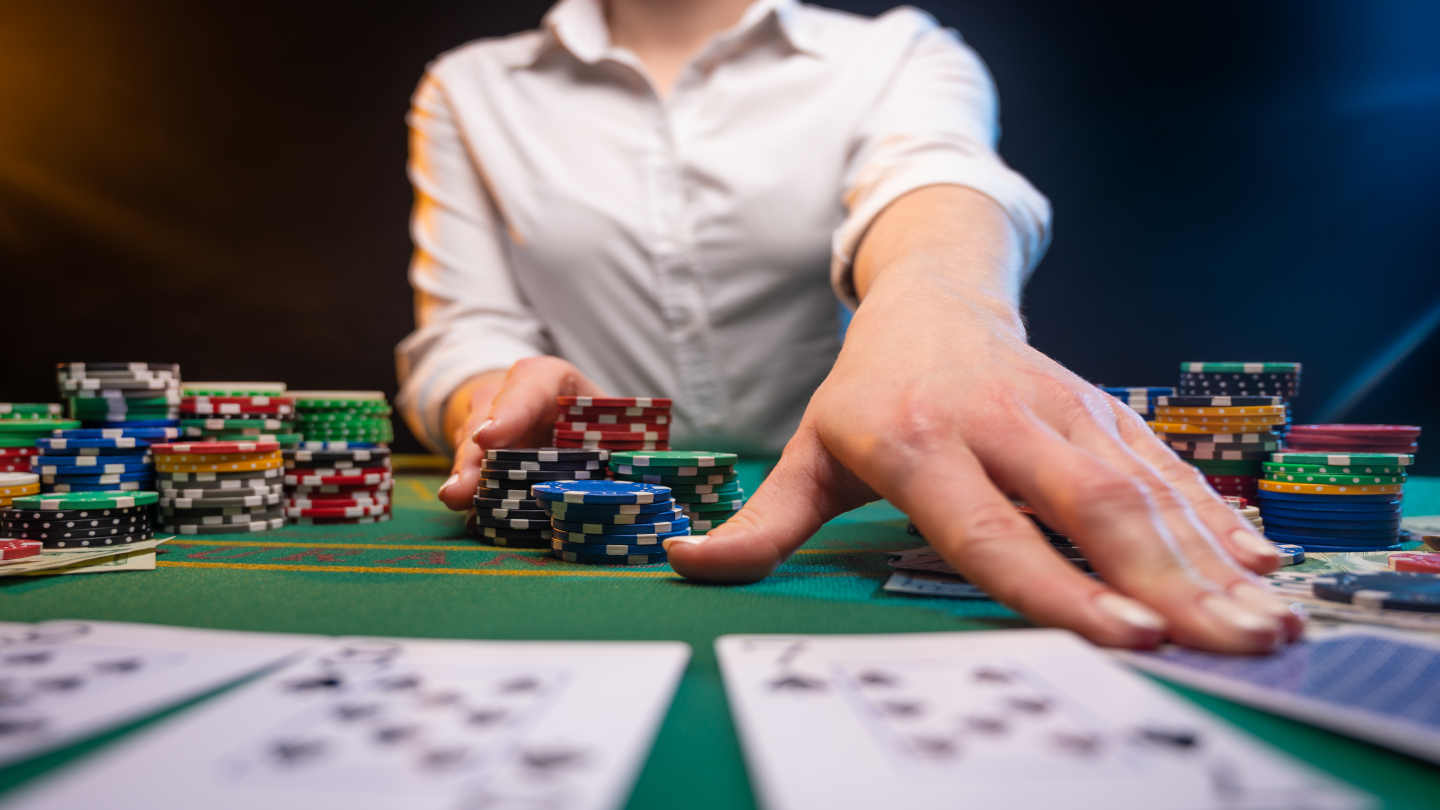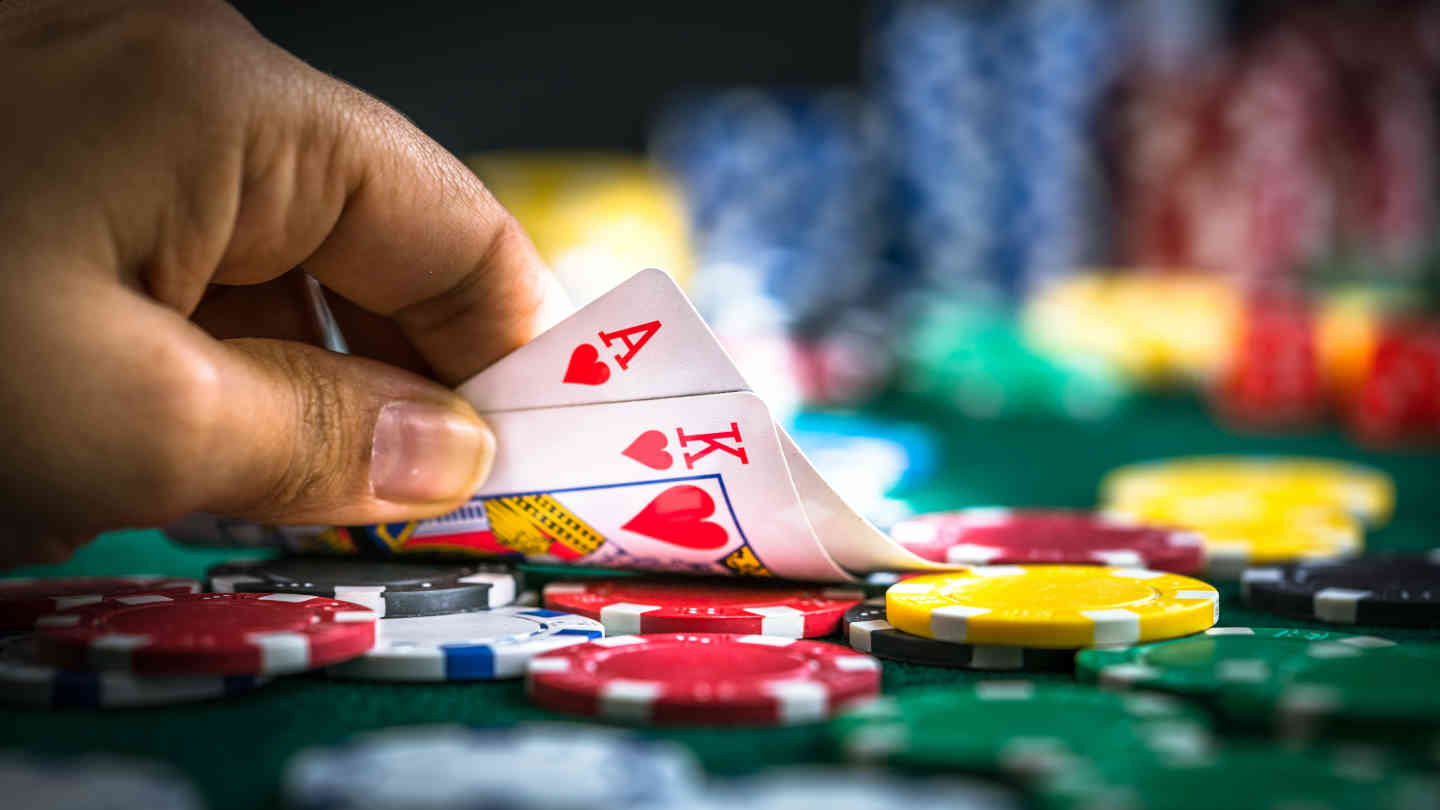Poker Buyin – How It Is Calculated In Tournaments and Cash Games

7 minutes
If you plan on playing poker long-term, one of the key things you should master is knowing your way around the poker buyin. This includes understanding how much you should buy-in in a cash game, how tournament buy-ins work, and many other aspects that come with this essential part of the game.
With that in mind, you’ve come to the best place to learn everything there is to know about buy-ins in poker. Read on to get the best tips on the Internet.
What is a Poker Buy-in? – A Simple Definition
If you’re a beginner looking for the basic definition, you can probably tell what a buy-in is even from the word itself.
In simple terms, a poker buyin is the amount of money you use to get into a particular poker game. If you’re not looking for in-depth information, this is everything you need to know to understand what this aspect of the game means.
That said, if you want to be aware of all of the additional considerations and rules that play into this part of the game, you should examine the factors that make it what it is.
This is why we’ve divided the topic into two separate parts – poker buy in rules relating to cash games and those that apply in tournaments. We’ll take a look at each of the two in detail, starting with the cash game poker buyin rules.
Poker Buyin Rules in Cash Games
Poker buyin rules in cash games are relatively simple and straightforward. The amount of money you buy in with you can also play with. Any money you win or lose directly affects your ending balance.
In other words, if you lose all of the money you bought in with, you’re going home without anything.
This is the base concept to keep in mind and what makes cash games inherently different from tournament buy-ins.
Besides this, there are several other factors to consider when talking about poker buy-ins in cash games. Most notably, these include:
Minimum and Maximum Poker Buy In Limits
Regardless if you play live or online poker, in most places, you’ll come across some form of a limit on how much you can buy in or rebuy for. These restrictions are primarily based on a specific number of big blinds.
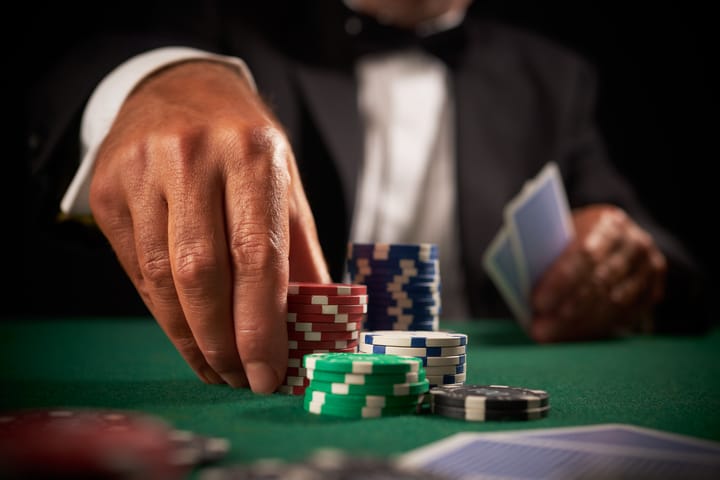
For instance, the minimum buy-in could be between 20 and 40 big blinds. On the opposite side of the scale, the maximum buy-in could be 100 big blinds, although this limit can be twice or three times higher in deep stack games.
Buying in Short Stack vs. Deep Stack
A more complex component from the strategic point of view is choosing to buy in as a short stack or deep stack. This can have a significant impact on your game. For example, if you buy in as a short stack, the volatility is higher, and you won’t be in play for as much money even when you go all in.
Limit, No Limit, or Pot-Limit Game
This is a vital element to weigh in, as cash game buy-ins are most relevant in the latter two types of poker games, especially in Texas Hold’em. On the other hand, in limit games, poker buy-ins aren’t as powerful of a tool as in the other two types. You’re constricted in terms of how much you can bet during each betting round, so how much money you have in front of you doesn’t really matter.
Poker Buy-in Rules in Tournaments
In tournaments, buy-in represents the amount of money you have to put into the tournament pool to participate in the competition. For example, the tournament you want to play in has a $55 buy-in.
This buy-in will most likely have a structure of $50 + $5. This means that the $50 of your poker buy in goes into the tournament prize pool. The remaining $5 goes to the tournament organizer to cover the rake costs.
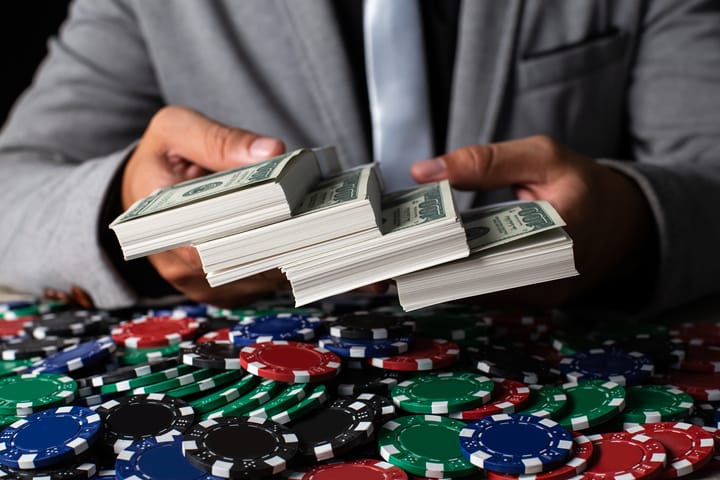
Every tournament has its own rules when it comes to buy-ins and rebuys. A poker tournament that doesn’t allow any rebuys is known as a freezeout tournament. Tournaments that allow rebuys usually structure them in the form of limited and unlimited rebuys. Each has its special conditions:
- Limited Rebuys – You can rebuy a specific number of times. After you reach the limit and lose your stack of poker chips, you’re out of the tournament.
- Unlimited Rebuys – There’s no maximum restriction on how many times you can rebuy, but there’s often a limit on the period in which you can rebuy. For instance, some tournaments can allow unlimited rebuys, but only the first couple of blinds.
Tournaments that provide the option of rebuying differ from those that don’t do so in two main aspects. The first and more obvious one is that the prize pool will undoubtedly be more significant with rebuys on the table than without this option.
Secondly, most players tend to play significantly looser than usually when rebuys are available. This is because they know that they can buy their way in if they lose out and don’t think much about the extra financial strain.
If you’re playing in a tournament with unlimited rebuys, a good way about it would be to double or triple up right away without playing too loose. Of course, if you find yourself in a situation that you have to rebuy for the fourth or fifth time, it’s best to call it quits.
Not only will you be spending more money just rebuying in, but your opponents’ stacks will be significantly larger. This makes it very challenging to catch up, especially if this happens in a later stage of the tournament.
How to Determine The Ideal Poker Buyin Size?
Now that we understand all of the critical parts of poker buy-in rules in both cash games and tournament settings let’s discuss another essential aspect that goes hand in hand with this topic.
It pertains to determining the buy-in size that will best suit your situation. Here are the three main factors that should shape your ideal poker buyin size.
The Size of Your Bankroll
Logically speaking, the first and most important factor that impacts how much you should buy in for when playing poker is the size of your bankroll.
It’s crucial to have a dedicated poker bankroll and set specific stakes you play with it, as well as exceptions when you should move up or down stakes.
Another aspect that players don’t generally want to think about but need to accept is that downswings are inevitable in poker. The quicker you realize this, the more successful you will be in preserving and building your poker bankroll.
To play it safe, you should have at least 50 and preferably 100 buy-ins in for poker stakes you intend to play.
Your Poker Confidence and Comfort
In line with the previous tip, you should never be betting more money than you can comfortably afford to lose. Play with buy-ins you’re confident betting and wouldn’t mind losing in case of a bad run.
If you buy in with your grocery or rent money, you probably won’t have a good time sleeping if you blow through it or even lose just because of a bad poker cooler.
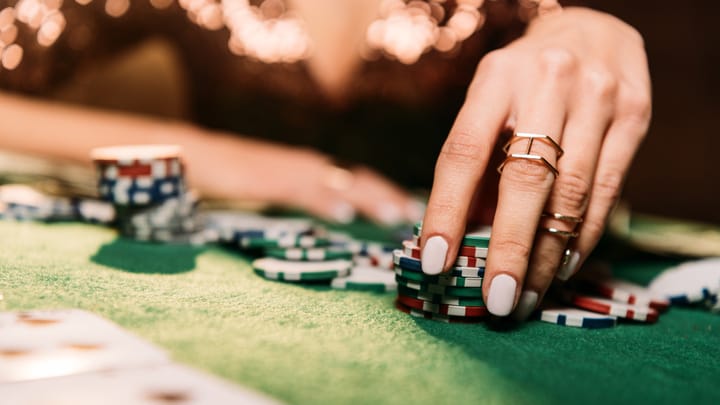
Regarding your poker confidence and comfort, you should also look at it from one different perspective. If you’re primarily used to playing poker tournaments, stick to them.
Alternatively, if you move on to cash games as a tournament player, focus on playing with a short stack, as this is the setting you’ll likely be most comfortable with, even if you don’t realize it.
This tip goes both ways. If you’ve built up your confidence as a cash player and are moving to deep stack poker, don’t force yourself to go for the maximum amount when buying in. This is a situation in which “sticking to your comfort zone” is the best long-term solution for ensuring profit.
Your Opponents
Lastly, after you’ve settled your mind on the first two determining factors, you should reflect on your opponents’ skill level as an equally crucial aspect for sizing your poker buyin.
If you believe that your skill outmatches your opponents’ skills, you can consider buying in for the maximum, as you’ll be maximizing your poker income.
Opposite to this, if you think you’re playing against skilled and more experienced players, there’s nothing wrong with buying in as a short stack.
Whatever you decide, just keep in mind that it’s always best to buy in short to get a sense of the competition and then top up if you find it suitable for the situation.
Buy-in Poker – A Quick Sum Up
Regardless if you prefer playing poker tournaments or only stick to cash games, you can’t play poker without understanding how rebuys and buy-ins in poker work.
Hopefully, we’ve provided you with enough details on this page to help you grasp how this essential mechanic functions.
Additionally, keep in mind the tips we shared with you on determining the ideal poker buyin amount based on your skills, playing preferences, and the situation you find yourself in. You should know all of these factors before you put your hard-earned money on the line!
- Poker Squeeze Play – Which Hands Make the Most Sense for Squeezing? - August 10, 2023
- How to Play Low Pocket Pairs in Texas Hold’em - July 29, 2023
- How to Make Deep Runs in MTTs More Often - July 22, 2023











